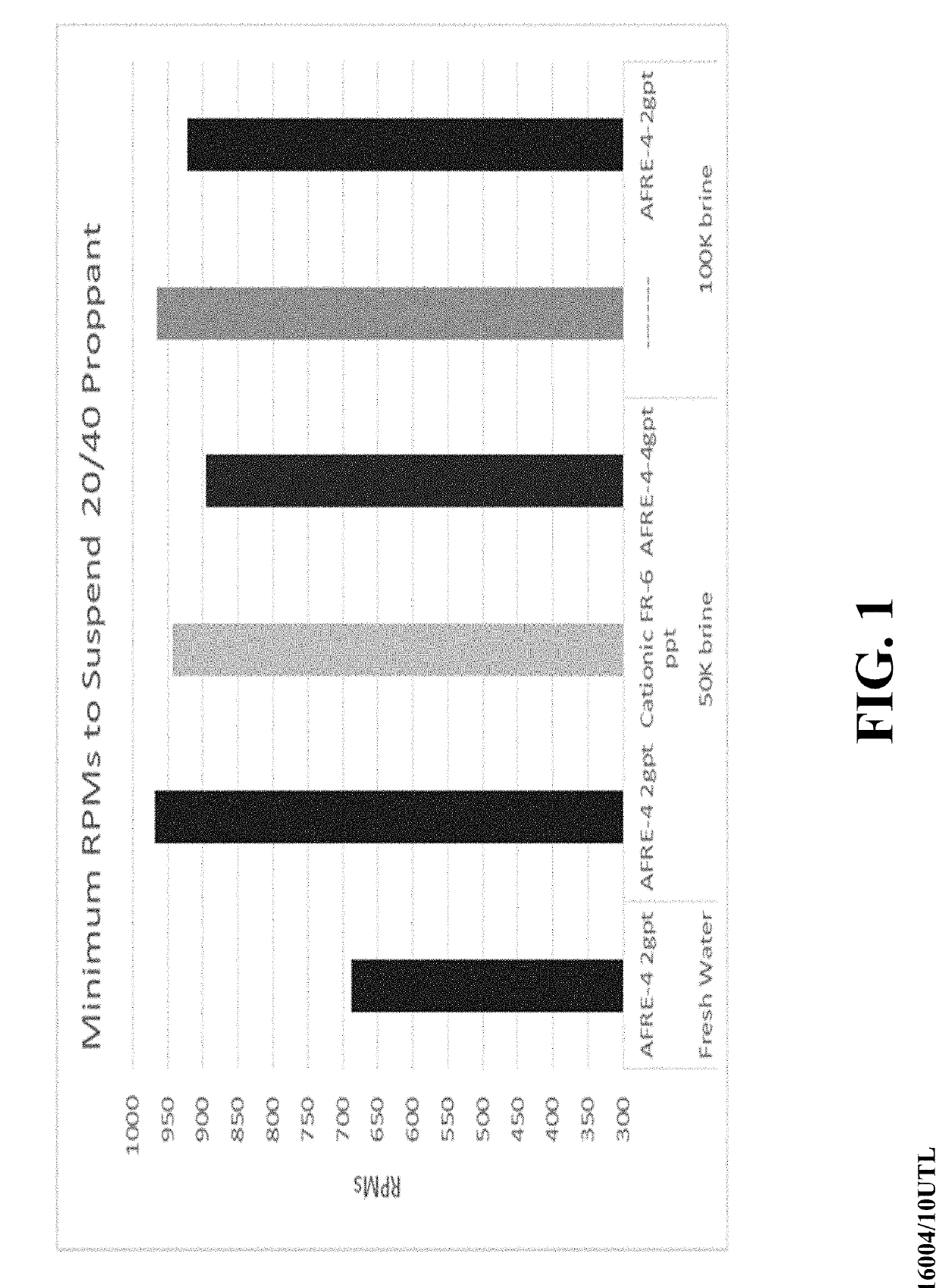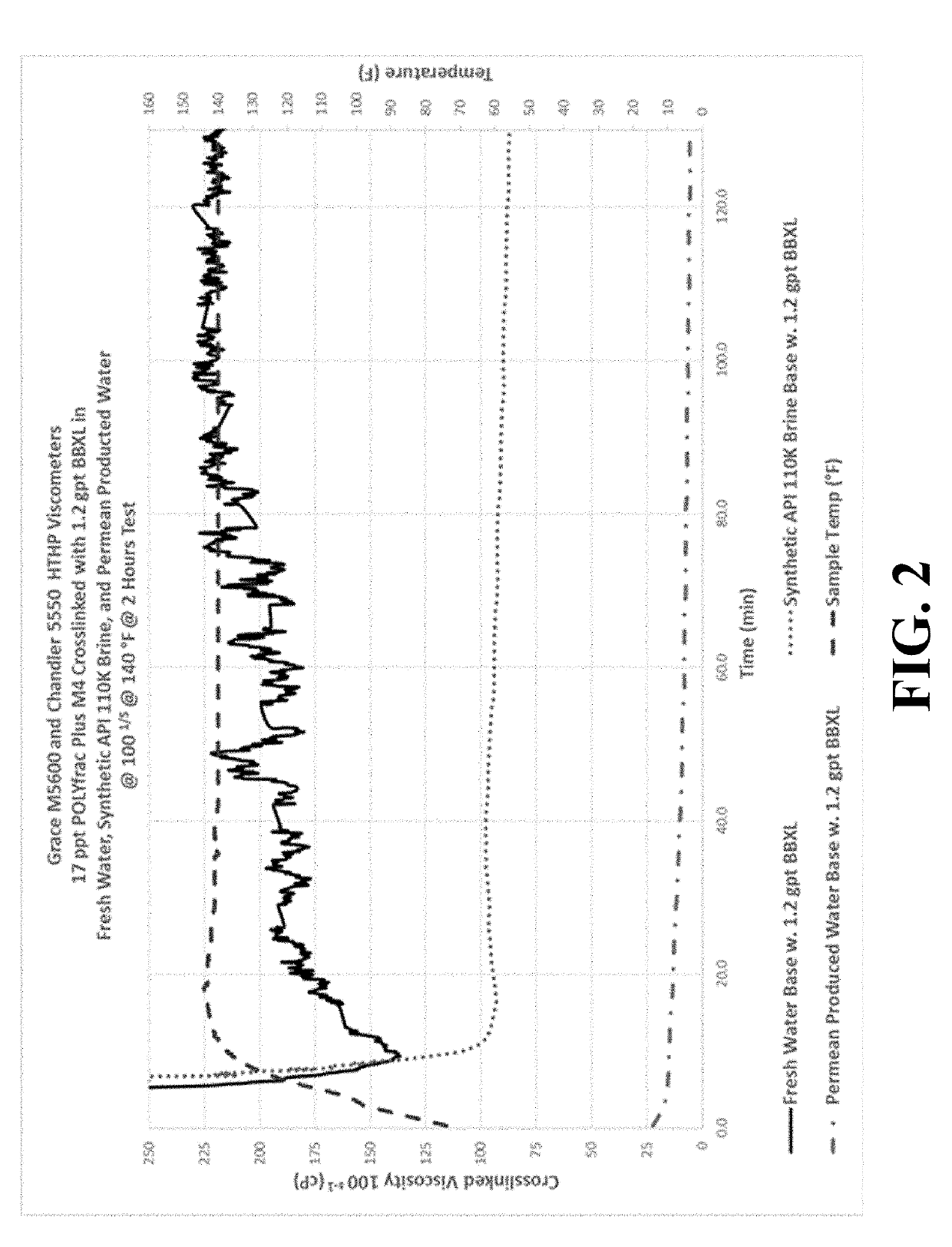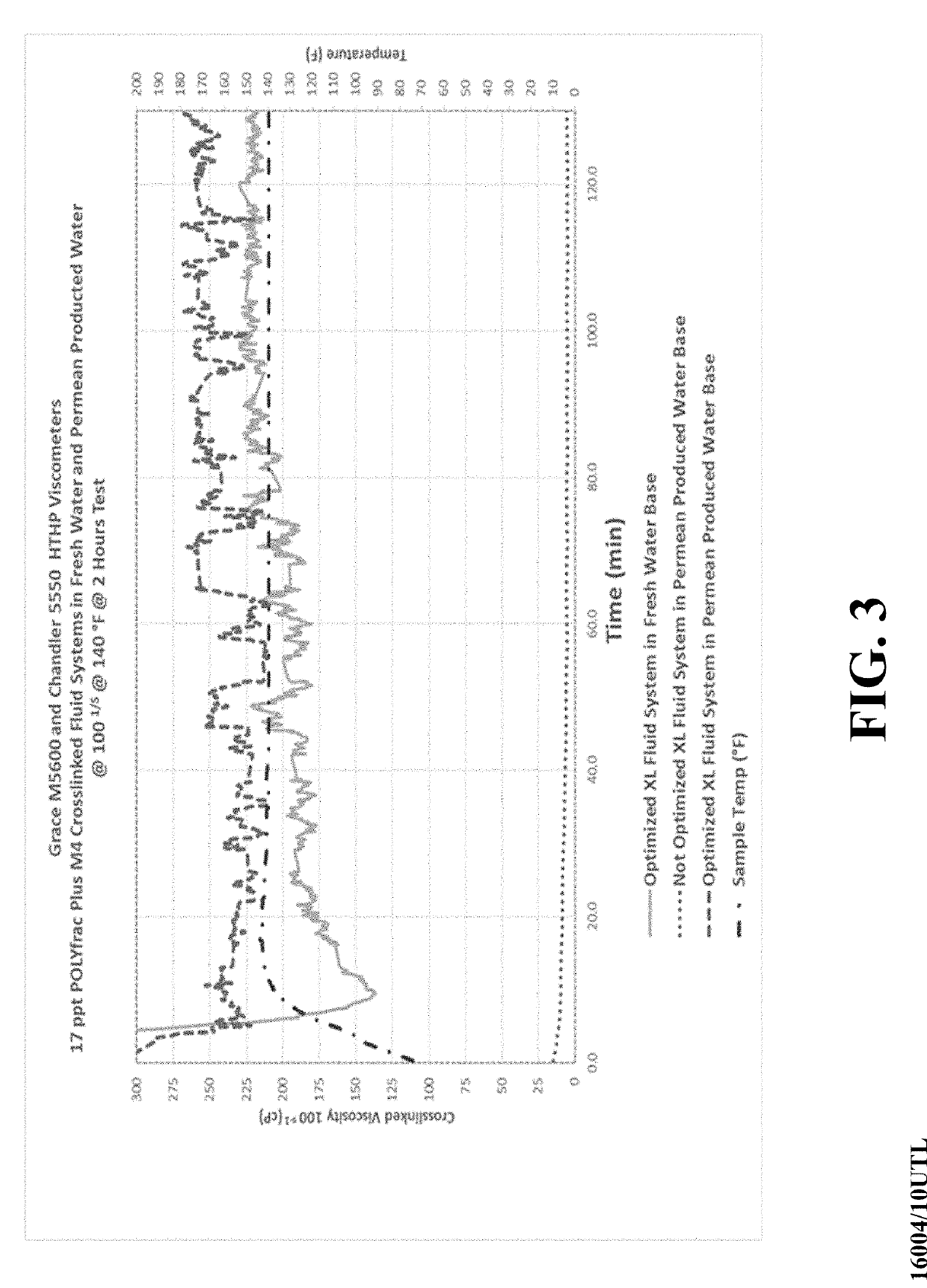Compositions and methods for cross-linking hydratable polymers using produced water
a technology of hydratable polymers and cross-linking, which is applied in the direction of fluid removal, chemistry apparatus and processes, and well accessories, etc. it can solve the problems of increasing the amount of fresh water consumed in each stimulation operation, and reducing the efficiency of the stimulation operation. , to achieve the effect of controlling the viscosity level and efficient and effectiv
- Summary
- Abstract
- Description
- Claims
- Application Information
AI Technical Summary
Benefits of technology
Problems solved by technology
Method used
Image
Examples
example 1
ed Fracturing Fluid Made with Produced Water
[0085]This example compared the rheologies of three different crosslinked fracturing fluid systems: a standard borate crosslinked fresh water fracturing fluid, a produced water sample including no pH adjusting buffer, and a produced water sample including a pH adjusting buffer. The rheologies are shown in FIG. 3.
[0086]A standard borate crosslinked fracturing fluid (made in a fresh water) was prepared using the following:
[0087]a) a guar gum loading of 17 ppt
[0088]b) a pH buffer to adjust the fluid pH to above 9
[0089]c) a borate crosslinking solution
[0090]This combination of chemicals produced the rheology properties represented by the grey curve in FIG. 3. This curve shows a fracturing fluid system that may sustain a viscosity of ≥200 cps @ 100 sec−1 for over two hours.
[0091]This test was then rerun after replacing the fresh water with a high TDS produced back water sample. The produced back water had an analysis as follows:
Property / Reagent...
example 2
on and System Behavior
[0108]A variety of compositions of this disclosure was tested. The same approach utilized in Example 1 was repeated for each composition to illustrate the effectiveness of this approach. The results of these tests are illustrated in FIG. 4.
[0109]The graph illustrates the results of utilizing the previously described compositions of the disclosure to generate a two hour viscosity that is comparable to what is achieved when using a fresh water. The eight produced water sources covered a TDS range from about 60 ppm to about 120,000 ppm. But even more important than the TDS was the presence of measurable amounts of ions (for example boron) that have historically been known to present major issues in creating a crosslinked fracturing fluid that exhibits the targeted viscosity and temperature stability that is required when utilizing this type of fracturing fluid system.
example 3
tory Effects
[0110]To measure proppant suspension properties of a polymer containing fracturing fluid (both before and after a shear history) in a dynamic test, the following procedure was developed:[0111]a) hydrate the polymer (to be evaluated) for 5 minutes at 1500 rpm.[0112]b) add 120 gm of 20 / 40 coated or uncoated sand (2 pounds per gallon) and mix for 60 seconds at 1500 rpm. Note that the 120 grams would equate to 2 lb / gal if the test sample size is 500 mL.[0113]c) lower the rpm until sand accumulates on the bottom of the blender jar.[0114]d) record the lowest rpm reading that does not cause sand accumulation.
[0115]To establish the shear sensitivity of the test sample, the above sequence was repeated by adding a high shear step (3 minutes @ 4500 rpm) between steps (b) and (c).
[0116]Using the above procedure (both with and without a shear step) with uncoated sand yielded the data shown in FIG. 5. The reported minimum rpm reflects the degree of dynamic movement necessary to keep t...
PUM
| Property | Measurement | Unit |
|---|---|---|
| pH | aaaaa | aaaaa |
| pH | aaaaa | aaaaa |
| pH | aaaaa | aaaaa |
Abstract
Description
Claims
Application Information
 Login to View More
Login to View More - R&D
- Intellectual Property
- Life Sciences
- Materials
- Tech Scout
- Unparalleled Data Quality
- Higher Quality Content
- 60% Fewer Hallucinations
Browse by: Latest US Patents, China's latest patents, Technical Efficacy Thesaurus, Application Domain, Technology Topic, Popular Technical Reports.
© 2025 PatSnap. All rights reserved.Legal|Privacy policy|Modern Slavery Act Transparency Statement|Sitemap|About US| Contact US: help@patsnap.com



